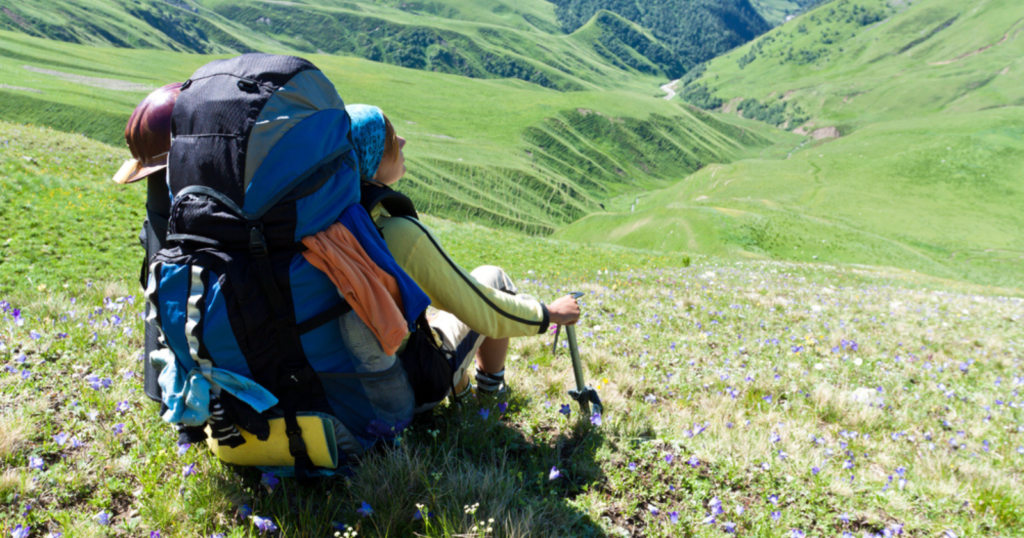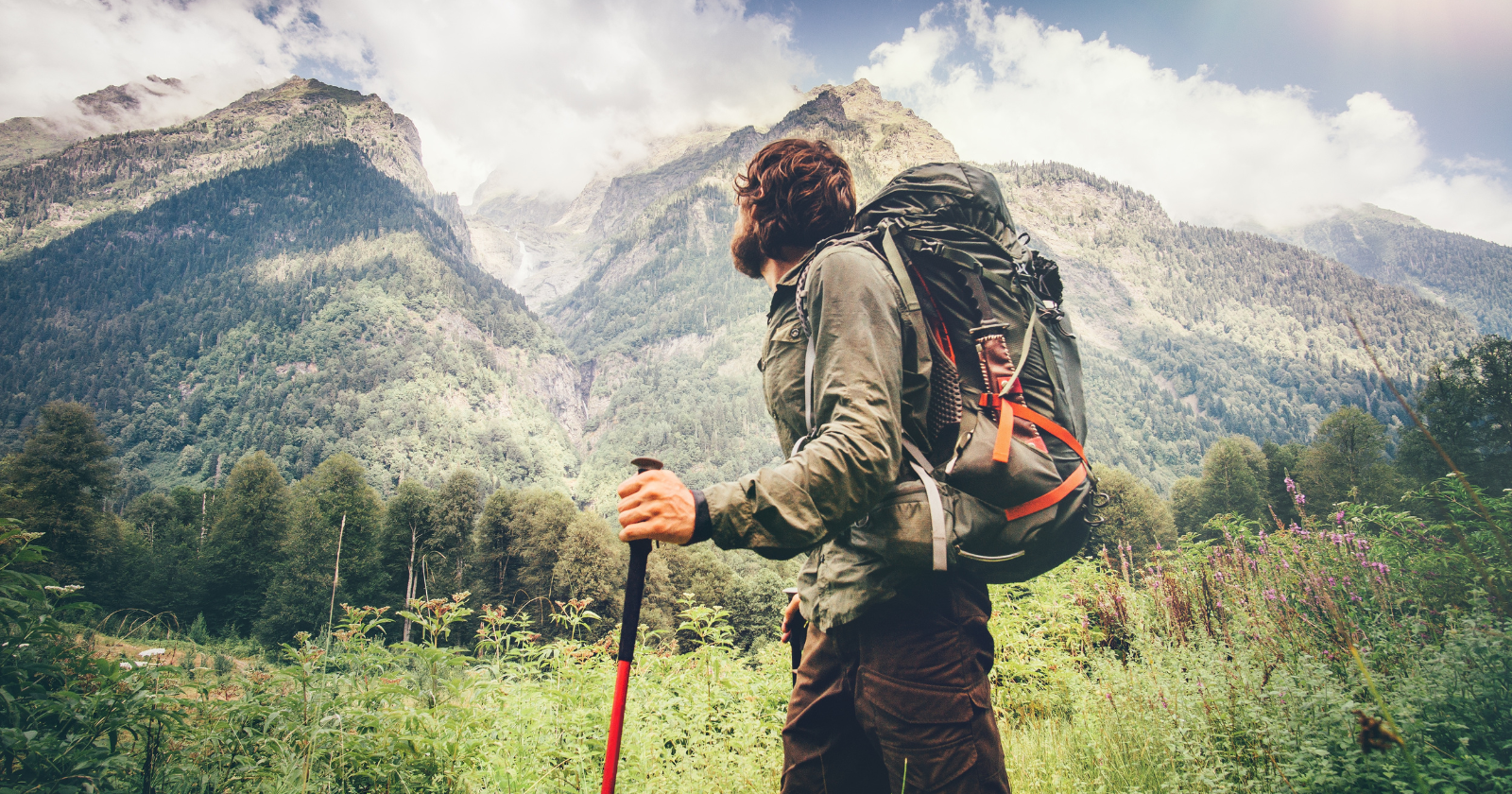If you are wondering “How to pack a backpack for hiking, you came to the right place. When you set out to pack for your trip, the stress sets in. No one wants to forget some of the most important items, like snacks or water.
I’ve been in your shoes with that nagging feeling that I forgot something and don’t know what it is until I couldn’t find it. So I dove deep into finding the best way to pack for a hiking trip.
How To Pack A Backpack For Hiking?
The most important part is to determine what kind of hiking trip you will go on. A day trip, an overnight, or an extended with a fight in the works. Then it is necessary to think about how much weight you can carry. A hurt back is no fun. Then we pack heavy items first, pack in layers, use compression sacks, and pack efficiently into every nook and cranny.
If you are getting ready for a hiking trip, whether you are a first-timer or a well-seasoned hiker, this post will set your mind at ease. So, together let’s navigate How to pack a backpack for hiking.
What Is The Right Backpack For You?
When selecting a backpack for your hiking trip, it’s important to consider the size and weight of the bag. You want to ensure that it is large enough to fit all of your gear but not too heavy so that it becomes a burden.
Look for bags with adjustable straps and hip belts to customize the fit to your body type. Additionally, look for backpacks with plenty of pockets and compartments to help you organize your items.
How Much Weight Can I Carry For How To Pack A Backpack For Hiking?
When packing a backpack for hiking, you must consider how much weight you can carry. Generally, the rule of thumb is that your pack should be at most 10% -25 % of your body weight.
For example, if you weigh 175 pounds, your backpack should be at most 44 pounds. It’s also important to distribute the weight evenly throughout the bag.
What Should I Pack When It Comes To How To Pack A Backpack For Hiking?
When packing a backpack for hiking, you must consider the essentials you will need on your journey. These include but are not all-inclusive of the items you will need.
- Water and snacks
- Sunscreen and insect repellent
- First aid kit
- Map and compass
- Clothing for layering
Also, take into consideration how long your journey will be. Is it a day of hiking or a long trip?
If you’re going on a long hiking backpack journey, you may need to pack additional items such as a sleeping bag, tent, and cooking supplies. Also, consider the terrain of your outdoor adventure. Depending on the season, how to pack a backpack for hiking could include trekking poles, snowshoes, or a rain cover.
Finally, it’s important to remember that packing light is the key. Only bring the items that you absolutely need and leave any unnecessary items at home.

Tips For How To Pack A Backpack For Hiking
Once you have the right backpack and an idea of what you will need, it’s time to start packing. Here are some ideas on how to pack a backpack for hiking:
1. Start with the heavy items: Place heavier items such as food, water, and cooking supplies in the middle of your bag. When you keep your center of gravity at the middle, it will be easier to carry.
2. Pack items in layers: Place items that you will need throughout the day at the top of your bag, such as snacks and sunscreen.
3. Use compression sacks: Compression sacks are great for packing bulky items such as sleeping bags or clothing to wear in layers. Reducing the size of your bag will make it easier to carry.
4. Utilize pockets: Take advantage of your backpack’s pockets and compartments. Organizing your items will make it easier to find what you need.
Variables On How To Pack A Backpack For Hiking
It sounds pretty easy, right? Now Let’s throw in some variables for how to pack a backpack for hiking, such as:
- Are you hiking cross-country?
- Will you need to fly with your backpack?
How To Pack A Backpack For Hiking Cross-Country?
Packing for a day or two is one thing, but cross-country packing will take more thought and organization. For a longer journey packing only the bare necessities is a must.
The best way to only pack what you need is to lay out what you think you need first, such as toiletries, food, hydration, and clothing. Then look at the items you need for shelter, sleep, warmth, and protection from the weather. We have not made an all-inclusive list, but ideas to trigger your initial process.
Once you have all your items out, it is time to decrease your needs. Look at your things and determine what items you can purchase when you run out. You can pack small bottles of some personal items and replace them when they are empty.
Put these items aside so you can put each in a smaller bottle. Now it is time to look at your clothing. Packing clothes to dress in layers is the answer for how to pack a backpack for hiking.
Take one set of clothing and wash them out when you can. Do you need a coat? If so, a down jacket will fold into a small space. Think in terms of sun-protective clothing, rain protection, and warmth.
Now you have an excellent idea of how to pack for the cross-country trip. But what if you must fly to your destination?

How To Pack A Backpack For Hiking When Flying?
Flying opens up a whole new set of rules; the TSA approved rules. Transportation Security Administration sets guidelines and regulations for what you can and cannot carry on and check on a plane.
You must know the size and weight limits when packing for a flight. Most airlines have a maximum weight limit of 50 pounds for checked luggage and a maximum size of 62 linear inches (length + width + height).
It would be best to consider what items are allowed in your carry-on bag. The TSA has strict rules about what you can and cannot take on an airplane.
When packing for a flight, it is crucial to be mindful of the weight and size of your bag. Pack items that are lightweight and can easily compressed into smaller sizes. Utilize compression sacks to reduce the size of bulky items such as sleeping bags and pack to dress in layers.
Also, it is easier to organize a backpack that has extra compartments. Not to mention you can access your belongings easier with extra pockets.
More than likely, your backpack will be a large one that is 50-100 liters. TSA also has guidelines for what size of personal bag or carry one you can take on a plane.
Carry on or Checked?
For most airlines, the carry on size is 22 x 14 in x 9 inches and must fit into the plane’s overhead compartment. The size limits for a personal bag are 18 in x 14 in x 8 in, and it will need to fit under the seat.
If your backpack exceeds these limits, you can check it and bypass the 3-1-1 rule for carry-on. But when checking your bag, follow the 62 linear inches (length + width + height) for maximum size on most airlines.
FAQs About Luggage Locks For International Travel
Here are some commonly asked questions about luggage locks for international travel.
Is it better to have your backpack tight or loose?
A backpack needs to have the straps tightened close to your torso. A snug backpack helps you squat, turn and lift without straining muscles.
How big of a backpack do I need for a 5 day hike?
The basic rule for a 5-day trip is a 70-80 liter backpack. A larger liter pack will hold more, but it will also weigh more, so a 70 liter is sufficient.
Where should heavier items go in your backpack?
You want balance and the center of gravity in your backpack to be in the middle of your back. Place lighter items in the bottom of the bag, your heavy things in the middle, and medium ones at the top.
Additional Resources
If you are looking for more tutorials, walkthroughs, and troubleshooting on luggage, here are some additional posts about luggage:
How To Pack A Backpack For Hiking – Conclusion
When learning how to pack a backpack for hiking, it is important to consider the weight and size of your bag. Utilize compression sacks to reduce the size of bulky items such as sleeping bags or clothing layers. Take advantage of your backpack’s pockets and compartments to keep things organized and easily accessible when needed.
If you are flying, consider TSA regulations regarding carry-on and checked luggage. Follow the size and weight limits for checked baggage, and adhere to the size limits for carry-on bags. With these tips in mind, you can be sure to have a stress-free packing experience.
Happy travels, my friends.
